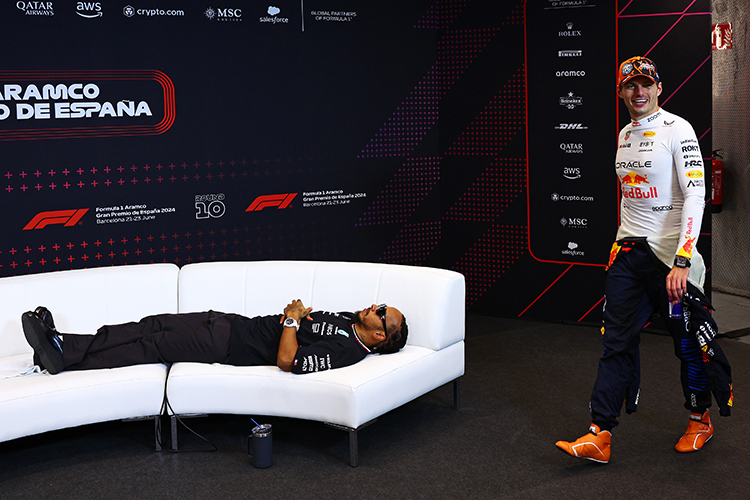Mercedes refines aerodynamic formula with bold updates to W16 for 2025 Formula 1 season
In their latest bid to reclaim dominance in Formula 1, Mercedes has unveiled the sleek and innovative W16 car design for the 2025 F1 season
While inheriting core DNA from the W15, this new 2025 Mercedes W16 aerodynamic update addresses weaknesses that hampered the team in 2024. From reimagined aerodynamic components to subtle tweaks improving low-speed cornering performance, the W16 represents Mercedes’ relentless pursuit of perfection on the F1 grid.
Engineering a solution to low-speed cornering frustrations in Mercedes W16 2025
Technical Director James Allison highlighted the team’s focus on overcoming last season’s hurdles:
“Being the fourth year of these regulations on the chassis side, the cars are in a more mature phase. Big gains in lap time are harder to come by, but we’ve been concentrating on making improvements in the areas that held us back last year. Our primary focus has been on dialling out the W15’s slight reluctance to turn in slow corners, along with the imbalance in tire temperatures that made the car inconsistent from session to session.”
The W15 struggled particularly in low-speed corners, an area where rivals like Ferrari excelled in 2024. While maintaining strong high-speed performance, Mercedes aims with the W16 to strike a balanced compromise between cornering agility and straight-line speed for the 2025 Formula 1 campaign.
Aerodynamic changes unlocking consistency in the 2025 Mercedes W16 F1 car
While the W16 retains much of the W15’s chassis and push-rod suspension layout, it introduces key aerodynamic innovations to the 2025 Mercedes F1 car. Most notably, the redesigned front wing features new flap geometry that increases outboard depth, paired with a narrower nose smoothly connecting to the bottom mainplane—eliminating the previous slot gap.
This Mercedes W16 front wing and nose redesign creates a negative pressure zone enhancing downforce on the front axle, prioritizing improved low-speed handling even if it risks slight rear-end instability. These refinements widen the car’s performance “sweet spot,” delivering a more consistent aerodynamic balance across diverse 2025 F1 circuits.
Radical sidepod reshaping and undercut design in the 2025 Mercedes W16
The W16’s sidepods have undergone a significant overhaul, adopting rounded contours and a Red Bull-inspired vertical and horizontal radiator inlet configuration. A notable feature is the newly introduced sidepod underside hump near the radiators, which is believed to accelerate airflow beneath the chassis. This venturi-like effect enhances airflow energy toward the diffuser, contributing substantially to rear-end stability—a vital consideration as aerodynamic loads shift with speed.
This Mercedes W16 sidepod redesign 2025 aims to deliver smoother increases in rear downforce that complement the front wing’s performance, ensuring balanced handling as regulations around front wing flex tighten at the Spanish Grand Prix.
Testing phase: Mercedes evaluates two contrasting nose designs on the W16
During early 2025 pre-season testing, Mercedes experimented with two distinct nose tip designs on the W16. Kimi Antonelli’s first runs featured a longer nose tip extending over the front element, contrasting the shorter nose used on the 2024 model. These alternative nose configurations present trade-offs in aerodynamic behavior, with the team seeking to validate simulation data through real-world testing.
F1 experts remarked on Mercedes’ pragmatic approach:
“It’s interesting to see that Mercedes are looking to vindicate their decision with a real-world example, rather than simply trust any perceived performance advantage that might have shown up in their simulations.”
Driver feedback and early optimism for the Mercedes W16 in 2025
George Russell, observing morning runs before driving, shared cautious optimism:
“This morning was a solid start for the team. The car’s handling well. It’s obviously very different conditions here compared to what we’re used to – very windy. We also know that last season, for example, there were such massive fluctuations in performance from all the teams. If you come away from this test quickest or fourth quickest or third quickest, you may not be able to read too much into it, but nevertheless, the car seemed to be performing well.”
Russell’s comments reflect the guarded hope within Mercedes as the W16 navigates challenging weather and early inconsistencies.
Looking ahead: Mercedes’ refined W16 and its potential impact on the 2025 F1 championship
With rivals like Ferrari and McLaren following divergent design paths in 2025, Mercedes aims to fuse their traditional high-speed efficiency with enhanced low-speed cornering precision—a notoriously difficult balance under the current regulations.
Only time—and the upcoming Spanish Grand Prix’s stricter front wing flex enforcement—will reveal the full potential of the Mercedes W16 aerodynamic updates for 2025. Meanwhile, Antonelli, Russell, and the engineering team remain focused on extracting maximum performance from what could be a pivotal chapter in Mercedes’ Formula 1 legacy.
Up Next



